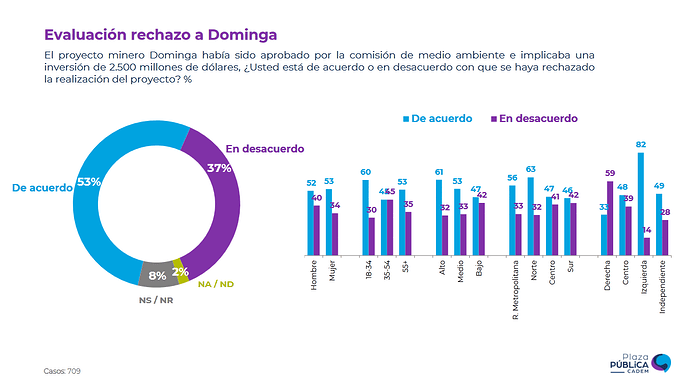Yet again, a ministerial committee rejected the Dominga mining project, located in the IV Region, as usual on environmental grounds.
Despite the environmental smoke-blowing, here are some points to consider.
The El Tofo mine operated in the same area for 50 years, apparently without affecting the local fauna, in an era when environmental considerations were nonexistent.
In 2015 the Cía Minera del Pacifico, the CMP, rapidly obtained approval for a marine terminal, Cruz Grande, situated in the same area, in Puerto Chungungo. But approval was denied to the Dominga project only two years later. (A pdf, announcing CMP’s plans has been removed, but is still available in Google’s cache.)
In 2017, a reunion of SEREMIs representing all sectors of government in La Serena voted against the project, despite not having previously raised serious objections during the lengthy project evaluation process.
Apparently the about-face was the result of a Telefonazo from Santiago, either from Bachelet herself, or from her inner circle of confidants.
This decision had several repercussions.
The image of Chile suffered, as the message sent was that despite spending literally years on obtaining operational approval, the whole process could be arbitrarily stopped without notice. Bachelet’s finance minister Rodrigo Valdés and his team resigned in protest over this irresponsible behavior.
Also, the IV Region lost a major job creation opportunity
Although the reasons for rejecting the project were less than clear at the time, it transpired later on that Piñera had a big interest in a murky (but not illegal) operation that transferred ownership to Minera Dominga, in association with his old pals,the Delano clan.
www.ciperchile.cl/2021/10/03/pandora-papers-
familias-pinera-y-delano-sellaron-millonaria-compraventa-de-
minera-dominga-en-islas-virgenes-britanicas/
The reasons for rejection had nothing to do with Penguins, Seals or Dolphins, but everything to do with political payback by Bachelet against Piñera. (Her covert anti-private-enterprise policies have been continued and expanded on by the present government.)
She showed no concern about the signals that her decision sent internationally, nor for the loss of 2,500 full-time jobs in an area where unemployment runs higher than the national average.
This latest rejection was widely anticipated, as Boric and Co are anti-commerce anyway; that, plus Bachelet influence within the Cabinet virtually guaranteed this result.
Since mining is Chile’s main source of income, its hard to understand why local politicians are doing their utmost to ruin the industry. Perhaps its a high-level manifestation of the spirit of auto-destruction seen here over the fast few years.

